Larry Darter's Blog, page 5
May 4, 2018
Why I Started Best Crime Thriller Books Blog
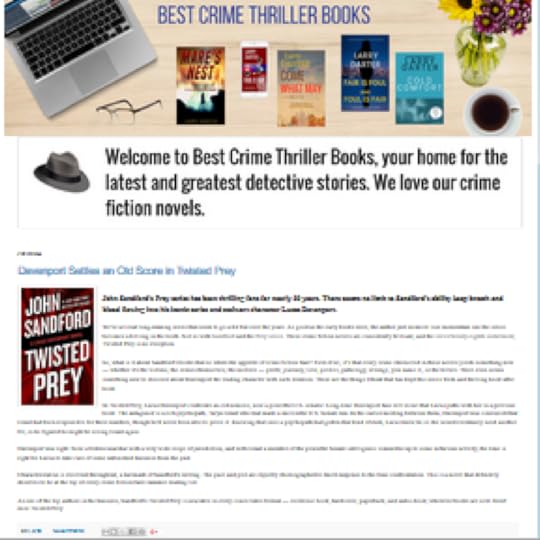
In my spare time in between working on the two novels I'll be releasing this fall, I started a new blog, Best Crime Thriller Books. It's a good bit different than this one which focuses mostly on writing and publishing books. With the new blog, I can remove my author hat and put on my reader hat. If you knew me well, you'd know I'm just as passionate about reading books as I am writing them.
Is the blog title click-bait you ask? Yes, pretty much. Ha-ha I researched some keywords around the topic I wanted to write about, crime thrillers, and best crime thriller books seemed a good one. After only a couple days I can confirm it is an effective keyword because many of the early visitors found the blog via that very search phrase.
Will I be using Best Crime Thriller Books to raise awareness about, and hopefully market my own crime fiction novels? Yes, of course, I will. Ha-ha But, honestly the motivation behind the new blog is not purely selfish. I'm also planning to talk about other great crime thriller novels that I've either read myself and enjoyed or have heard about from others.
I plan to post about books written by other authors at least three times as often as I post about one of my own books. As an example, the blog post today is on John Sandford's new Lucas Davenport novel (The Prey series).
A regular weekly feature of Best Crime Thriller Books will be "Flashback Friday" where I'll write about some of the great crime fiction books of the past by the masters like Raymond Chandler and Dashiell Hammett. I'll be writing this week's piece as soon as I hit publish on this one.
The crime thriller blog will be focused on indie authors, and small press published novels. However, I don't plan to ignore traditionally published books. Some of my favorite crime fictions authors publish traditionally, and I certainly wouldn't ignore covering and reviewing their books.
If you're a crime fiction fan, please stop by Best Crime Thriller Books and kick the tires. Also, if you have any crime thriller favorites you would like to see featured on the blog, do let me know. I haven't put together a contact page on the new blog yet, but I'll have something up very soon.
Best Crime Thriller Books: https://bestcrimethrillerbooks.blogspot.com/
May 2, 2018
Lulu Press Review -Thinking Of Using Lulu To Publish Your Book?
As promised in the previous post, here is my Lulu Press review based on my personal experience with the services offered by Lulu Press. If you are an indie author evaluating which print on demand (POD) publisher to use for your print book, I hope you find this information useful.
I took the company's POD publishing services for a test drive. In the post today, I'll share with you my experiences and my recommendation where it comes to using Lulu Press.
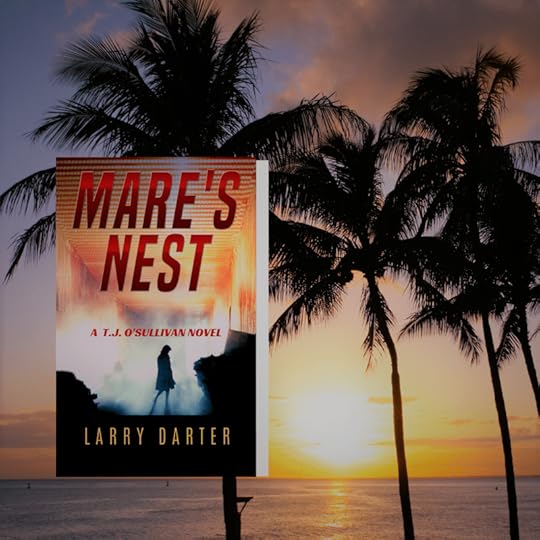
About Lulu Press
Lulu Press is a POD publisher located in Morrisville, North Carolina. The company produces books in print and digital form. Printed books are available in several formats and sizes including paperback, coil bound, and hardcover. Books can be printed in black and white or full color.
How Lulu Press Works
As with all POD publishers, authors upload their files in digital form to Lulu.com, both interior files, and cover. Authors can then buy copies of their own book, make it available for purchase in the "Lulu Bookstore," and for books meeting Lulu's distribution criteria, apply to have their book distributed to retailers such as Amazon.com, Barnes & Noble, and Apple's iBookstore.
My Lulu Project
My Lulu project was a hardcover version of my latest novel, Mare's Nest. This review pertains only to creating a hardcover book with Lulu Press as I have not created a paperback or digital book with the company.
Overall, Lulu Press was not difficult to navigate. The book creation process is quite similar to that of the other POD publishers I've used in the past.
Lulu does offer an interior book file template that can be used. I didn't use it to format my interior files since I already had formatted files ready for uploading. I did give the template a test drive. I found it a bit difficult to use and personally wouldn't attempt to use it to create interior files.
Similar to Barnes & Nobel Press, Lulu does not offer a one-piece PDF cover template like those provided by Create Space and Ingram-Spark. That makes it a bit more challenging to create a cover to upload to Lulu. The company does offer a crude template, but I found it difficult to use. In the end, I downloaded a template from Ingram-Spark, adjusted it to fit Lulu's requirements, and then created my one-piece dust jacket cover file from that. That worked fine. My cover was accepted on the first submission attempt.
I definitely got the feeling that Lulu Press prefers that clients use their online book cover design tools rather than trying to submit a one-piece cover. I also took the Lulu cover design tools for a test drive and was not impressed. The prototype cover I created was as unattractive as those you would get using the DIY Create Space cover designer. I already had professionally designed cover art and was set on using it for my Lulu cover.
Why I Tried Lulu Press
I've used Ingram-Spark to produce the hardcover versions of all three of my Malone Mystery series novels, and have been very satisfied with them. The problem that indie authors face when it comes to using POD publishers is that the production costs are so high it's nearly impossible to set the retail price of the book at a competitive level. As an example, on Amazon, my hardcover novels are priced higher than those by many traditional authors who are household names. As you might expect, I haven't sold a lot of hardcover books as a result.
So, after looking at the Lulu Press website, I was hopeful I might be able to get a hardcover published at a lower cost so that I could make my retail print book prices more competitive. Another attractive feature advertised on the website is that Lulu Press gets print books that meet their criteria into the Ingram-Spark catalog which can lead to worldwide sales.
Here is What I Learned Trying Lulu Press
First, in spite of all the "publish your book free" claims that abound on Lulu.com, in the end, it isn't completely free at all. You don't discover that until the very end of the files uploading process. At the final step, you learn that Lulu Press requires the purchase of a proof copy that must be used for final approval before a book is accepted for distribution. The information on the site claims that this is for the purpose of "quality control" even though you have a very detailed digital proof at the end that is every bit as good for that purpose as a physical copy of a book. It was only twenty bucks, but my issue is it seems a bit dodgy that Lulu doesn't tell clients upfront about the proof copy purchase requirement.
Next, Lulu promised me that my proof copy would be rushed out to me by FedEx once printed and that I should expect to receive it within five days after it was printed. Instead, I received the proof ten days after I was notified it had been shipped, when it was delivered by the good old USPS. I considered the shipping cost I paid a premium rate and was not pleased to learn the book had been shipped book rate through the post office.
Now to the actual proof copy itself. First, the dust cover was outstanding. It was every bit as good as those I've seen from Ingram-Spark. The colors were faithfully reproduced from my professionally done artwork. The jacket fits the book perfectly. But regarding the interior of the book, there were lots of problems.
The paper used for the book interior was definitely substandard and cheap, not at all comparable to the stock used by Ingram-Spark or even Create Space for that matter. Because the paper was so thin, that caused problems with the binding. Some of the pages wrinkled on the bound side when turned. Also, on many of the pages, the print was not straight. In fact, it was so crooked that it was immediately noticed.
Finally, as it turns out, it is actually more expensive to have a 6x9 hardcover book published by Lulu Press than through Ingram- Sparks. To cover the print costs and the standard discounts offered to bookstores, I had to set the retail price of the book at the same price as the books I've created at Ingram-Spark. The problem with that is this. All my Ingram-Spark hardcovers are traditional novels in the 100,000-word category or about 300 pages in length. Mare's Nest, on the other hand, was by intention, designed to be a quick read and came in at around 170 pages. Since the cost of printing is essentially determined by the number of pages, the cost for printing Mare's Nest should have been considerably less than the cost of all my lengthier Malone novels.
What Distribution?
After I finally received and was able to approve the proof copy, Lulu assured me that my book would immediately go into distribution. It's been nearly two weeks since I approved the proof, yet my hardcover book isn't available even on Amazon, much less anywhere else. It has always taken only 3-5 days for my hardcover books published with Ingram-Spark to show up on Amazon. I'm beginning to suspect that the only distribution I'll get is placement in the Lulu bookstore. Hmm, wonder how many people think of the Lulu bookstore when the mood to purchase a new read strikes?
To be fair, perhaps things just don't happen as quickly with Lulu as with Ingram-Spark and Create Space. So, being a good chap, I'll certainly apologize for these distribution comments if my book ever surfaces in a bookstore beyond Lulu.com.
The Takeaway
Lulu Press? I'm not impressed. I published my first and last book with them. I feel they are best suited for what they obviously do, vanity publishing. I cringe to think of having my name on the cover of such a poorly constructed hardcover book, in spite of the fabulous dust jacket. I have decided to unpublish the book at Lulu and consider the whole thing a twenty dollar learning experience. If you're an author looking for a POD publisher, I suggest looking elsewhere. Personally, I'll be re-publishing Mare's Nest and publishing all my future hardcovers with Ingram-Spark, and I'll stop whining about the costs for first-rate book printing and binding work.
April 23, 2018
My Advice to Those Thinking of Using Barnes & Noble Press for a Print Book – Don’t

What you feel like after using B&N Press for print
Recently, I got the bright idea to publish a paperback version of my newest release, Mare's Nest, with Barnes & Noble Press. In the end, I think "ordeal" is the best word I can think of to describe just how unpleasant and frustrating it was trying to publish a paperback with Barnes & Noble Press. Frankly, it felt like a beat-down. The experience left me feeling like I'd been beaten like a rented mule. That is what I've attempted to convey with the comical (and incidentally completely fake) image at left that I've used to illustrate this post.
In the past, I've always published the paperback versions of my books with Create Space. Consequently, my paperbacks do not appear on the Barnes & Noble website. That's understandable, of course. Create Space is owned by Amazon, the biggest competitor of Barnes & Noble. Why would Barnes & Noble wish to support its competitor by selling paperbacks produced by Create Space? Spoiler Alert: They wouldn't.
When I learned that Barnes & Noble had launched this past January, a new self-publishing platform where authors can publish both print and digital books, I jumped at the opportunity to try it out. I have been uploading my electronic books directly to the Nook platform for years, and my electronic books have sold quite well at B&N.
It seemed a no-brainer to take advantage of the opportunity to get my paperback versions into the industry-leading brick and mortar bookstore chain as well. But, I quickly discovered that publishing a paperback with Barnes & Noble Press is far easier said than done.
Cover files issues
One glaring drawback to Barnes & Noble Press that I discovered immediately is that they do not provide a PDF template that you can upload to your photo editing and manipulation software to produce a print ready one-piece book cover.
I don't claim to be an expert when it comes to making book covers, but over the years I've learned a good bit about how to go about it. I routinely create one piece covers for paperbacks and hardcover dust jackets that pass muster with both Create Space and Ingram Spark. But creating a one-piece cover that's acceptable to Barnes & Noble Press is infinitely harder. In my opinion, it may even be damn near impossible for anyone to do other than professional digital designers. The biggest reason for that, in my opinion, is because Barnes & Noble Press provide you a cheesy Word template to use instead of the PDF form that seems fairly industry-standard everywhere else.
I made three attempts to upload a one-piece cover. Fail, fail, and fail. Check and checkmate. I gave up. I reverted to the other option offered. I uploaded a front and back cover and allowed Barnes & Noble Press to provide the spine and then integrate the three pieces into a print-ready cover. My first attempt using that option seemed to work since the next rejection from them focused on my interior files.

Interior files issues
I've been self-publishing for a while now, and able to competently format a paperback book in Word. Once I've done that, I use the Word function to save the file as a print-ready PDF which is what I upload to Create Space and Ingram Sparks. I've never had a problem having my interior files rejected by either of those printing companies. Not so with Barnes & Noble. Even after doing it exactly the same way as I've done it many times before for the other POD printers, my interior files were rejected by B&N Press.
I don't recall the technical language used in the rejection note, but basically what it said was that the colors used in the print-ready PDF were too dark. That the note said would result in the printer applying too much ink when printing the book, and it would likely cause the ink to smear.
After searching the web without success in the attempt to learn how to lighten the color black in Word, which was, of course, the only color used in my interior files, I tried changing the print color to gray in hopes that would solve the problem. I submitted the files again.
Yep - more cover issues
The next rejection note received said that my cover files had words that extended beyond the bleed lines and might be cut off. So, back to correcting the cover files drawing board. I meticulously followed the measurements provided by B&N and then resubmitted the separate front and back covers again.

Interior files rejected - again
The next rejection note received again advised me that my interior cover files colors were too dark for acceptable printing. By this point, it had become obvious to me that PDF files produced with Word were never going to be acceptable. In fairness, in the instructions, Barnes & Noble Press had recommended that PDF files be created using Adobe Acrobat. But I didn't have that available. I have the reader, but not the creation software. Why was this an issue? The Word produced PDF has always worked fine with every other printer I've used. That not only includes Create Space and Ingram Spark but Lulu and another short run private press too. What could be so different about the "innovative" print process at Barnes & Noble Press?
It was at this point that I waved the white flag of surrender. I was not about to buy Adobe Acrobat simply to publish a paperback with Barnes & Noble Press. I deleted the paperback version project and settled for uploading my electronic version.
Well-played Barnes & Noble Press, I thought. Well-played. You prevented me from learning your successful book files creation secrets. Reminiscent of the Lord of the Rings character Boromir meme, "One does not simply publish a paperback book with Barnes & Noble Press.
Time passes - wounds healed
It took weeks of wound licking for me to get over my big fail at Barnes & Noble Press. But, finally another brainstorm. Since it appeared I had finally managed to get the cover files accepted, albeit after somewhere around a dozen attempts, maybe there was a way to get past the Barnes & Noble interior files gatekeepers. I recalled reading somewhere about the Reedsey Book Editor where you could get book interior files formatted both as electronic books and print ready PDF files. I headed over to Reedsey and uploaded my book to the editor. A few minutes later I had a beautiful print-ready book interior PDF file. It was back to Barnes & Noble Press for another attempt. I uploaded the Reedsey produced interior files and the same cover files that had finally been accepted the previous time.
I wish I could tell you that the files were immediately accepted and that my Barnes & Noble Press version paperback is now available at Barnes & Noble. Unfortunately, I can't. Going on four days after I uploaded the files, my paperback still shows as "Publishing" on my projects dashboard. That's the status that is assigned until the book is actually published, or gets rejected. While I remain hopeful, I'm not out of the woods yet on this, my final attempt to publish with Barnes & Noble Press.
The takeaway
If you are a mere mortal independent author and self-publisher, my advice is to avoid Barnes & Noble Press in its current form like the bubonic plague. In fact, you would most likely find contracting a case of the bubonic plague a mild inconvenience in comparison to the trials and tribulations of attempting to upload print book files to Barnes & Noble Press. I don't think I can say it any plainer than that.
The website claims the new Barnes & Noble Press platform is innovative and easy to use. Not true. Trust me. If it is so innovative, why are print book files that are perfectly acceptable to every other print on demand (POD) publisher rejected by Barnes & Noble press? I have to believe that the problems I encountered were not entirely of my own making. Honestly, I feel some of the rejections I received were capricious. I suspect that once my files had been rejected numerous times, the re-submissions weren't even looked at seriously. I think they were just rejected out of hand. Who could blame the person doing that? I mean they look at the computer screen and see a dozen rejections. How could they have any confidence I finally got it right?
What to do instead
What I have done in the past, and will do in the future is this. I'll publish my print books through Create Space without the wide distribution so that it gets my book into the Amazon eco-system. Then I'll print it through Ingram-Spark to make it available everywhere else. That's what I recommend others do as well unless Barnes & Noble Press corrects some of the platforms more egregious shortcomings.
My advice to Barnes & Noble Press
If you want to compete with the other POD publishers, you've got to up your game. Provide a simple to use custom one-piece cover PDF template that self-publishers can use to build a cover from like all the other POD publishers do. Fix the problem that causes rejection of PDF interior files produced with Microsoft Word. News flash. Hardly anyone outside large corporations owns Adobe Acrobat DC. No boot-strapping self-publisher is going to buy an expensive piece of software that they don't need to produce acceptable book files for anyone but Barnes & Noble Press. Make the print side of your publishing platform at least marginally user-friendly. The rejection notes I received seemed like they were aimed at a printing expert who understood all the jargon and nuances of the book printing industry. Your notes outlining required corrections were far too technical and not helpful at all.
Over to you
Have you ever attempted to publish a print book with Barnes & Noble Press? If so, were you more successful than I've described? Or like me, did the experience feel pretty much like you were a Hobbit on a quest you felt totally unprepared for to Mount Doom in the land of Mordor? Please let me and other interested readers know with a comment below.
Next time, I'll share my advice to those who may be considering self-publishing a print book through Lulu. And, I'll let you know whether Barnes & Noble Press has accepted my book files or not.

April 20, 2018
Quarterly Author Updates Instead of Newsletters
Introducing quarterly author updates. Truth is I've never been much for making New Year's resolutions. But at the start of 2018 I sort of made one. I decided I should commit to putting out a monthly newsletter for the good folks who subscribe to the email list. I subscribe to the email lists of several authors whose books I never miss reading. At least to me, it seems a little disappointing to subscribe to an email list and then never get an email, update, or anything. You find yourself thinking, what was the point of subscribing?

Tongariro National Park NZWe all know which road is paved with good intentions
It's just human nature I think when you discover an author, or actor, or musician whose work you admire and enjoy, that you find yourself wanting to know that person more. At least I do. To my continued amazement, a lot of people have read the books I've written over the past couple of years. So, it seems there is a chance at least that some of the people who have read my books would like to hear from me from time to time about what's going on with me and the writing.
Honesty requires that I admit I haven't lived up to my good intentions as far as putting out a monthly newsletter by email. There are reasons for it, but most of them would probably just sound like excuses. The fact remains, however, that I haven't kept up with it even though it is something I felt I should be doing. I've decided to try something different. I've decided that instead of a newsletter, I'm committing to writing a quarterly author update post and publishing it here on the blog. This then is the first installment and will serve as the update for the second quarter of 2018. Hopefully, I can be more consistent using this approach than with the newsletters.
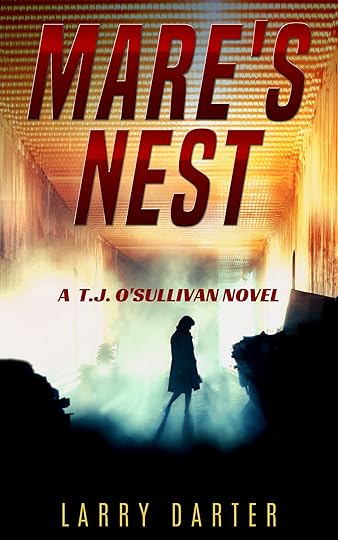
Just out in paperback
I’ll begin with the writing. I released the first T. J. O'Sullivan book this month, called "Mare's Nest." If you've read "Cold Comfort" you'll recognize T. J. as a supporting character from that book. I enjoyed creating that character so much, I decided to give her a series of her own. But, don't be surprised to find T. J. showing up in future Malone novels too.
The title, "Mare's Nest," comes from an idiom. In the previous blog post, I explained all about how I came to use it as the title for the first T. J. O'Sullivan book. So if you want to know more about that, you can read that post here. At the moment, "Mare's Nest" the eBook version is available from any of the online booksellers. That includes not only Kobo, Apple iBooks, Barnes & Noble, Google Play, and Amazon, but all the smaller retailers too. The book is also now available in trade paperback. The hardcover version will be available very soon.
Second T.J. O'Sullivan book in the works
My focus at the moment is finishing "Foregone Conclusion," the fourth book in the Malone series. But, since I'm well ahead of schedule with that book, I've had the luxury of being able to spend a day or two each week working on the second book in the T. J. O'Sullivan series. That book is called "Honolulu Blues." I expect to publish it in early October.
If you're a Malone fan, I hope you will give the T. J. O'Sullivan books a try. You'll find the style of both series to be very similar, and I think you'll like the new series. I really enjoyed writing the first book, and hope that many will enjoy reading it just as much. What you will find is that by design, the T. J. O'Sullivan novels are shorter in length than the Malone novels. I made the conscious decision to make them shorter in hopes of making them appealing to those who don't have a lot of spare time to devote to reading. At just over 50,000 words, "Mare's Nest" is a book many readers can start and finish on a Sunday afternoon, and just about anyone can read the entire book over a weekend. I think the book is also well-suited to those who enjoy reading a book on his or her phone during their lunch breaks, or on commutes to work.
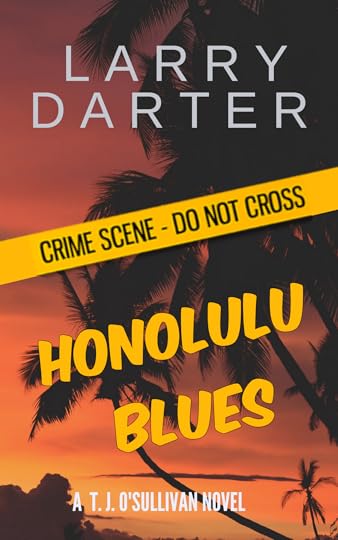
I'm reaching out here to any of you who choose to read "Mare's Nest" because I'd really like your help in reaching other potential readers. I'm not the kind of author who ever worries about getting onto bestseller lists. My focus is and has always been doing my very best to tell good stories, stories people will enjoy reading. But, it's tough to get traction when launching a brand new series, so that's where I'd really appreciate your help
If you read "Mare's Nest" and enjoy it, please recommend the book to a friend or family member you feel might like it too. As always, if you have the time, I'd really appreciate it if you would write and post a brief review on Goodreads or the online eBook retailer website where you purchased the book. Reviews mean so much to authors today. A review needn't be long to be extremely helpful. In fact, something as brief as "I read the book, and I recommend it" is really all it takes. You could, of course, add as much more of your own personal insights to that as you wish. But one sentence like that would help more than you know.
Actually, for a limited time, if you are interested, you can get a free copy of the eBook in exchange for a review from Book Gobbler.com. You can also sign up there for a chance to win one of three copies of the book in trade paperback.
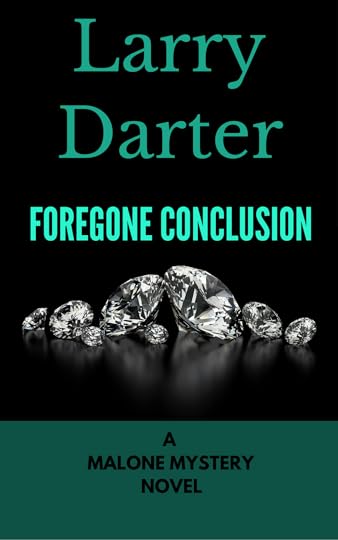
Now on to the Malone series. I mentioned I'm ahead of schedule on "Foregone Conclusion." In fact, I'm rolling back the date of publication. The book was scheduled for release in November, but I will be publishing it two months earlier in September. I plan on setting up a pre-lease for "Foregone Conclusion" at a special price. So, be looking for that around the first part of July if you're interested.
In addition to the two series, I'm also working on a spy thriller aimed for release in early 2019. I've wanted to write a book in this genre for a while now and finally have the time to write it. The book is called "Reichstag Burning" and is set in the modern-day Middle East. At present, the book is planned as a stand-alone novel. But, that could change.
So the writing is going great. On a more personal note, my partner Suzanne and I will be celebrating our fourth year together this summer. She is one amazing lady, and in many respects, our relationship has literally been like living in a fairy tale. Things just get better and better. For the past four years, we've had to settle for spending far too much time apart from each other because we happen to come from opposite sides of the planet with me in the U.S.A. and her in New Zealand. We're still working out the last of the details, but that is about to change very soon. For the first time, we'll soon be living in the same place. For both of us, that's been a long-time dream. I'll share more about that in the next update. Suzy recently took a new job in social services, and she is really enjoying it very much. That doesn't surprise me since she is the most caring person I've ever met. She loves helping people which makes her perfectly suited to her new position. This past week, she and her sons have been on holiday during fall break for New Zealand schools. They have been enjoying Tongariro National Park located in the central part of the North Island of New Zealand. They've hiked the Tongariro Crossing, enjoyed the alpine scenery, went white water rafting, and gone trout fishing. Like all Kiwis, they love a good adventure while on holiday. And yes, I'm totally jealous!
My children are doing well, and both celebrate spring birthdays. Andi, my youngest, turned 32 last month. She is a school teacher like her mom and lives with her husband in a community west of Oklahoma City. Amber, the eldest, turns 36 later this month and is staying busy keeping up with my three grandchildren. She and her family live in Norman, Oklahoma, home of Oklahoma University. Go Sooners!
Now over to you. If you have time, I'd love to hear your opinion on this change in how I will be providing updates going forward. Please let me know with a comment.
It seems a positive change to me. Truth is, like me, you are probably a bit burnt out. You are inundated with content in many formats on may devices almost every hour of the day. Maybe another email in your inbox every month felt like the last thing you needed or wanted. With these quarterly blog updates, you won't miss a thing. You can choose to read them on your own schedule or not read them at all if you wish.
Best wishes from me to you and yours, and thanks for your support.
April 14, 2018
Mare’s Nest Novel Released
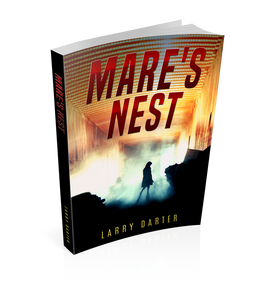
Mare's Nest, the first novel in the new T. J. O'Sullivan series was released this week. T. J. O'Sullivan, a supporting character introduced in the last Malone novel, Cold Comfort, is the lead character. Many of the readers of Cold Comfort shared with me that T. J. was their favorite character in the book. So, I decided to give her a series all her own.
Where did the title come from? Mare's nest is an idiom. One explanation of the meaning of the idiom "mare's nest" that is available on the web is;
mare's nest
"A difficult, complicated, or confusing situation."
Source: "a mare's nest." Farlex Dictionary of Idioms. 2015. Farlex, Inc 12 Apr. 2018 https://idioms.thefreedictionary.com/a+mare%27s+nest
The circumstances described in that definition are precisely what befalls T. J. in the book. She travels to Hawaii on what appears at first blush to be a routine missing person case. But, very quickly after she arrives in Honolulu, the case becomes anything but. In other words, it becomes a regular "mare's nest."
The idiom actually came to mind as I wrote the first few chapters of the book and it just seemed the perfect title for it.
Usually, before making the final decision about a title, I check books in publication to see whether the title has been used before. But, in this case, I didn't, so my sincere apologies go out to author Lesley Kagen who used the idiom as the title of a book she published in 2012.
Since book titles cannot be copyrighted, any author is free to use an existing book title for his or her own book. But, I prefer not to do that since it can cause confusion. In this instance, I reused the title out of negligence. But frankly, I really cannot imagine a title more perfect for this first T. J. O'Sullivan crime thriller.
As of the publication date of this post, the electronic version of Mare's Nest is available wherever eBooks are sold. The book files have been uploaded to the paperback, and hardcover printers and print versions of the book should be appearing in bookstores next week.
We've had some modest success with audiobook versions of the first three Malone books. For that reason, I'm interested in producing an audiobook version of Mare's Nest. The problem is both of the narrators I've worked with on the Malone books are male. Given the protagonist of this book is female, it seems only natural to me that a woman should produce the audiobook version of Mare's Nest. That requires finding another narrator to work with.
Another complicating factor is that since T. J. is a native of New Zealand, she, of course, has a New Zealand accent. I feel the narrator for the book then also needs to have a credible Kiwi accent. I've advertised for an audiobook producer on ACX where the Malone novels were produced as audiobooks, but thus far I haven't received any offers. There is a New Zealand actress who shall remain nameless for the moment who I think would be a perfect narrator for Mare's Nest and I have written to her in hopes of striking a deal.
I have some UK author friends who have told me that they have sometimes received negative reviews from American readers who object to their using British English spellings and words commonly used in the UK that are not commonly used in the United States. For that reason, I am interested to see how American readers react to the liberal use of New Zealand vernacular and Kiwi specific vocabulary.
For example, Americans refer to the back of a car as the trunk while New Zealanders call it the boot as the British do. As one of my dearest New Zealand friends often tells me, "You don't speak English. You speak American."
So why risk negative reviews by using New Zealand specific words and phrases in Mare's Nest? Simple. In writing a book that features a New Zealand woman, the only means to demonstrate that she is a Kiwi is to have her talk like a Kiwi. In television or the movies, you could hear her accent, but of course, that isn't possible in a written medium.
Most American readers will be able to guess the meaning of the Kiwi specific words used throughout the book through the context of how they are used. Whether or not they will enjoy having to do that is another matter. But to make things easier, I thought I might include in this post a few of those words commonly used in New Zealand that a reader will encounter in the book.
Bloody - a word used to emphasize the word it precedes. Bloody is put into any old sentence and Kiwis use it a lot.
Bugger - a word used to indicate something has gone wrong/amiss.
Carked it - something or someone has died.
Carpark - parking lot.
Cock up - a mistake, to go badly.
Crim - short for criminal.
Dairy - a convenience store.
Eh - has a variety of meanings. It can be what, huh or doesn’t it, to name a few.
Flat - apartment.
Heaps - means a lot.
Jandals - what Americans call flip-flops or thongs. Literally, an abbreviation for Japanese sandals.
Kiwi - a flightless bird native to New Zealand, a shoe polish brand, a fruit, and also how New Zealanders refer to themselves.
Mare - a difficult time. Often preceded by "bloody."
Mate - friend.
Mean - awesome.
Motorbike - motorcycle.
Motorway - highway
Munted - broken.
Muppet - an incompetent idiot.
No worries - this means no problem.
Not even - not true.
Oi - hey.
Pack a sad - feeling unhappy about something or having a tantrum.
Petrol - gasoline.
See you - saying goodbye to someone, but does not necessarily mean that you will see them later.
Skux - cool or trendy.
Servo - gas station.
Smoko - smoke break.
Stink one - an expression of disappointment.
Sus - when a situation or someone is considered suspicious.
Suss - to investigate or to figure something out.
Sweet as - awesome.
Ta - a shortened version of thank you.
Togs - swimsuit.
Torch - flashlight.
Ute - pick up truck.
Wop-wops - a place in the middle of nowhere or far from anything. Similar in meaning to BFE if you are familiar with the acronym.
Yeah nah - I've heard it said that Kiwis use this paradoxical yes and no phrase when they are a little indecisive on what the heck they are trying to say. I prefer to believe when a Kiwi says yeah nah, they are acknowledging understanding of what you may have said, but no, what you said wasn't quite right.
Though not an exhaustive glossary, hopefully, the above will be helpful to American readers of Mare's Nest. Personally, I find Kiwi speech to be very colorful and enjoyable to listen to. But, I tried to use just enough Kiwi euphemisms and slang to make T. J. a credible Kiwi without reducing her to a comical caricature. To be fair, most of the time my Kiwi partner speaks just as an American might, albeit with a noticeable New Zealand accent. She doesn't in other words, use the words in the short glossary above constantly. But she does use most if not all of them sometimes as do all my New Zealand friends.
If you're interested in obtaining a copy of the eBook version of Mare's Nest, this useful universal book link will help you to find the link to it at your own favorite online bookseller.
January 27, 2018
Is Inkitt’s Crowd-Source Publishing a Viable Model?

Recently, I put my Cold Comfort novel up in its entirety on a site called Inkitt, a display site that runs a novel contest. It's still there for a little while longer and if you're interested in the book, you can read it free on Inkitt, and save yourself three bucks. If you do, please vote for the book in the contest.
As explained in a previous post, Inkitt advertises itself as a publisher that uses a crowd-source publishing model. Briefly, the way it works (according to Inkitt) is this. An author publishes his or her book on the site to enter a contest. Interested readers can read the book free. An algorithm developed by Inkitt collects and analyzes reading pattern data and reader engagement levels. This enables Inkitt to make objective and data-driven decisions on whether a novel has marketable potential. Authors whose books meet the criteria a (contest winners) are offered a publishing deal.
A few days after later I mentioned putting Cold Comfort on Inkitt in a writer's forum I'm a member of. Another member quickly replied telling me that Inkitt was just another YADS (Yet Another
Display Site), not a legitimate publisher. I was provided a couple of links to sites that had reviewed Inkitt and determined it wasn't a legitimate publisher.
I took a look at both of the reviews, one at Jim C. Hines blog, and the other at Writer Beware. Hine's noted that Inkitt touts a book by an author named Erin Swan as its first publishing success story, but that he had been unable to find the book in publication at Amazon or anywhere else other than the Inkitt website. I did a little fact checking on that and admit I found the same thing Hines did. I also found a website for the author that seems to indicate that her contest-winning book is still, in fact, unpublished because the Inkitt team is still shopping it to big-name publishers.
While neither Hine's blog or Writer Beware goes so far as to brand Inkitt a scam, both did point out enough troublesome things about the company to raise doubt about whether Inkitt can actually get anyone's book published beyond its own website. The claims I read in both of the reviews I read were well documented, so I don't doubt the veracity of either. On the other hand, I'm not particularly concerned about putting a book up on Inkitt, and here's why.
I hadn't been contacted by Inkitt but discovered the company and website by reading about it in another blog I follow that is written by a very well known and respected member of the independent author community. I've always found that blog reputable and have a hard time believing the blogger would post information and links to an outright scam. Because I trust that person, I'm willing to give Inkitt the benefit of the doubt. Also, I didn't enter the Inkitt Novel Contest with the expectation of winning the contest and getting offered a publishing deal. Even if that happened, after reviewing the contract that Inkitt offers authors, I'd decline the offer because I feel I can do better publishing on my own than I'd do partnering with Inkitt.
I put my novel up on the Inkitt site simply as a potential means of getting my work in front of another group of readers. I hope that perhaps someone who comes across Cold Comfort on Inkitt and likes the book might later want to get a copy of one of my past or future Malone novels. As a relative newcomer to fiction writing, I think anywhere I can gain some extra visibility for my books is worth pursuing. Publishing a book on Inkitt then, to me was pretty much the same as publishing on Wattpad, another display site where I've uploaded some of my work.
As far as my own experiences with Inkitt, I can't say publishing there has been wildly successful. My book has been on the site for a couple of weeks now, and a little less than 50 people have read at least parts of the book. About a dozen readers have put the book on their reading list. But, the engagement bar on the Inkitt dashboard that is supposed to visually show me the engagement my book is getting on the site hasn't moved at all. Evidently, the engagement I've had then hasn't impressed the Inkitt algorithm at all to this point.
On the other hand, I don't see how my participation at Inkitt could be construed a negative. At least almost 50 people who probably never heard of me or my books previously, have now been exposed to both. So, despite the reviews and the opinion expressed by a fellow writing forum member, I plan to leave Cold Comfort up on the site for a little while longer. I'll probably take it down by mid-February unless the rates of reader engagement increase dramatically before then.
The one real question I think deserves consideration is whether a crowd-sourced publishing model, like that of Inkitt, is a viable one. Personally, I think it could be. It really seems no different than using Patreon or crowdfunding sites, as many authors do to reach potential readers.
Historically, trad publishers have made decisions on whether to offer authors a publishing deal based on their own professional judgment of whether the books had potential to sell enough copies to make it profitable for the publisher. It's hardly an objective process, and acquisition editors and committees don't always get it right.
Trad publishers publish lots of books that in the end don't turn out to be profitable and they turn away a lot of authors who subsequently enjoy great success. As one example, celebrated author James Patterson I believe had his first novel turned down by 31 publishers before it got published. I think you can safely and objectively say those publishers were wrong as it gets. Maybe crowd-sourced publishing is a better and more objective way to go about book acquisitions. That said, I'll agree it remains to be seen whether Inkitt has actually mastered using the crowd-sourced publishing model effectively or not.
January 22, 2018
100 Classic Books Challenge

One of my aims for 2018 is to read some of the classic books I've neglected for, well, the majority of my life. You might call it my 100 classic books challenge. What sparked my interest was watching the Denzel Washington movie, The Equalizer (2014).
The movie is a thriller, so of course, the reading classic books part is only a part of it. The main thrust of the story is that McCall comes out of his self-imposed retirement when he finds his desire for justice reawakened. But, the reading classic books part of it was something that piqued my interest.
There is no list of 100 classic books from the movie. However, interestingly enough when you Google something like "100 books to read before you die official list" or "100 best novels" or "100 books everyone should read before they die," it's obvious a lot of people have searched Google using "book list from the equalizer." Evidently, I wasn't the only one whose interest was piqued by the mention of reading classic books in the movie.
The Official List of the 100 Classic Books Challenge
If you have never done a search for an official list of the best 100 classic books what you will find is there really isn't one. Well, some lists claim to be "the official list," but what I'm getting at is that there isn't some universally recognized official list.
What you will find is that there are a lot of lists from the likes of Goodreads, Business Insider, the BBC, Amazon, The Guardian, and the New York Times, to name a few.
Personally, if you are interested in doing your own 100 classic books challenge I don't think it matters which list you choose. All the lists I've seen have many of the same titles on them.
The list I am using is the Goodreads list. The list was actually drawn up from a vote by members. I chose that one because many of the other lists have Harry Potter titles on them. Not that I have anything against Harry Potter books or JK Rowling for that matter. But in spite of their popularity, in my opinion, the Harry Potter books hardly qualify as classics. If for no other reason, the books simply haven't been in existence long enough.
During 2018, I plan on reading one book from the list every month. I've read a handful of the books already either when I was in high school or college, so I may go back and re-read some of those again. I could read more than one book each month, but my to be read pile is already so high, I think one classic per month is all I can realistically do for now.
I also plan to post reviews of the books I read on Goodreads, and I'll post an update here on the blog each quarter with links to the reviews.
_____________
Now over to you. Are you interested in participating in the 2018 100 Classic Books Challenge? If so, please let me know by posting a comment.
January 17, 2018
Read Cold Comfort Novel FREE on Inkitt
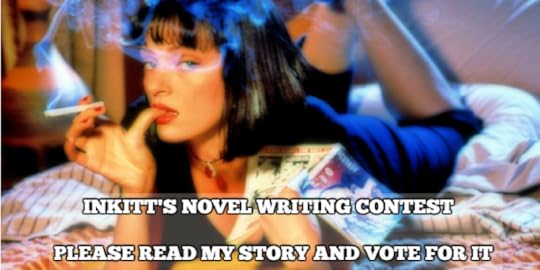
Read Cold Comfort Free on Inkitt
For a limited time, you can read my Cold Comfort novel, the third book in the Malone Novels series FREE on Inkitt. The full novel is available. I just recently learned of Inkitt and decided to experiment with it by uploading my book there as an entry in the Inkitt Novel Contest.
Whether or not you're interested in reading the entire book, I'd very much appreciate it if you would visit the book page and vote for it.
What is Inkitt?
Inkitt is an online platform where authors can post their manuscripts, and readers can read them for free for a limited amount of time. While similar in some respects to Wattpad, Inkitt also bills itself as "the world’s first reader-powered book publisher."
Inkitt uses a proprietary algorithm that analyzes the reading behavior of users to predict the potential of the manuscripts uploaded to the site. Authors with well-performing books may be offered a publishing deal by Inkitt. The platform's team works closely with authors selected for publication to maximize each book’s potential.
Once the Inkitt team sees that a novel is performing really well on the site, they contact the author to offer them a publishing deal and invite the author to sign a contract. The company's team of professional editors makes sure that the manuscript is up to snuff by giving it two rounds of in-depth editing. After the editing, a proofreader goes through the manuscript one final time to polish it.
Inkitt also produces the book cover. Three different cover options are created for the author to choose from. The author is then encouraged to run tests on social media to see how potential readers react to each cover.
Inkitt emphasizes that the author remains completely involved in the entire process and is considered the chief editor. Platform editors are viewed as consultants who will suggest changes and ideas, but the final say remains with the author.
Once a selected book had been published in paperback, and as an eBook, Inkitt also provides the author promotion and marketing assistance. To accomplish that, the team runs ads on multiple social media networks, schedules book events, and obtains reviews for the book in advance of the book launch using a network of 20,000 book reviewers, bloggers and booktubers.
How it Works
Inkitt's approach to publishing is based on crowd wisdom. The proprietary algorithm provides the objective data on reading patterns that Inkitt believes can best predict the potential to reach a large readership.
To start the process, authors can either write their book or upload their completed manuscript to Inkitt. Manuscripts must meet the platform's guidelines which are quite standard. Authors are then responsible for publicizing their book to attract readers. Inkitt does provide helpful tips on best practices for attracting an audience. The main take away here is that there is more too it than just uploading a book to the platform. To get your book noticed and discovered by readers, you will have to do the work promoting it.
One of the coolest features on the site is a progress bar on your author dashboard. Once you've uploaded your book, and once readers start to find and read it, the bar keeps you visually posted on how the algorithm is progressing in collecting the data that will determine whether you have a chance at getting a publishing deal. According to the site, the better you do with promoting your book and attracting an audience, the faster the process goes.
I hope you will consider visiting the page for my book on Inkitt. I'd really appreciate it if you would vote for my book. If you should decide to try Inkitt with one of your books, please let me know and I'll be happy to support yours in return.
A registration is required to read and vote on the site, but it's both free and easy to register. Like so many sites these days, if you don't want to register with an email, you can simply sign up using an existing social media account.
January 13, 2018
Do You Bublish?
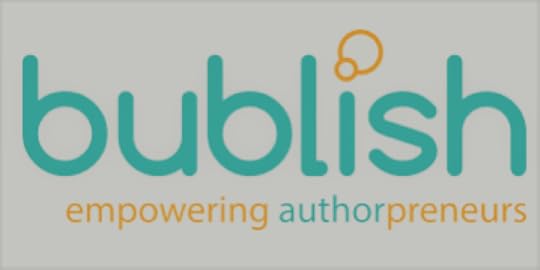
I happened across a new website/tool today for authors. It's called Bublish, and the site claims it can help connect authors with new potential readers. With thousands of new books being published daily, if it works as advertised, Bubblish could become a game-changer for book marketing by independent authors and publishers.
Can Authors Bublish Their Way to More Readers?
The biggest challenge independent authors face today isn’t finishing a book and getting it published, but getting the book noticed once they get there. Visibility is really the name of the game these days with literally thousands of new books hitting the virtual shelves of Amazon and the other online booksellers every single day.
It can be difficult to publish a successful book for authors that know far too little about book promotion and marketing, sadly a club I admit being a member of. Without an effective marketing plan, it is difficult to sell many copies of your book because few potential readers know it even exists.
Developing an effective promotion and marketing plan is hard for those of us who don't know enough about marketing and actually find it the part of writing and publishing that we like least. After all, who wants to come off looking like a sleazy used car salesman?
So, when a new platform comes along that demonstrates the kind of ingenuity that could possibly help get books noticed in the ever-growing crowded marketplace, I'm all over it. At least from my early look at it, Bublish seems to be such a platform.
How Bubblish Works
After signing up with Bubblish, you create a profile similar to those on other book-related websites with a photo and bio. You upload a book cover, a synopsis, and an ePub file for your book (or books). Don't worry. Your book files won't be shared and are not available to anyone but you. The purpose of uploading the book files is so that you can use the files later in the process to create the namesakes of Bublish, book Bubbles.
Bubbles are social media sharing ready excerpts from your book or books. Bubbles contain your photo, bio, a book excerpt, and links to the retailers where interested readers can find your book. Once you have created a Bubble, to publish it, you simply share it on Twitter or Facebook. After doing that, the Bubble also shows up in a feed on the Bublish website which has reader members as well as author members.
From your dashboard, you have access to some useful analytics that Bublish provides. Analytics include number of views of your Bubbles from the social media platforms where you shared them, views of your social media profiles driven by the Bubbles you shared, and conversions, the number of people who have viewed your Bubbles on social media that clicked on a book retailer link.
What Does Bublish Cost?
Cost of our book promotion and marketing efforts is a concern for most independent authors, especially if you're a new author and just getting started. For what the site appears to offer, in my opinion, Bublish seems affordable.
You start with a free 7-day trial when you first sign up. No credit card information is required or requested. After the trial period expires, you can opt to continue as a paying subscriber for $9.95 per month, or you can choose to continue with a free account.
A free account limits you to promoting only one book through the site and removes access to many of the bells and whistles the site offers like the analytics mentioned earlier. But it seems there is still some value to signing up with Bublish even if you choose not to become a paying subscriber, especially if you're a new author with only one book out.
When it comes to a social book discovery and commerce platform with the potential of increasing visibility for your books, Bublish seems to fit that bill. I just signed up today to have a look and to kick the tires. I signed up, completed my profile, and created my first Bubble for Come What May, the first novel in the Malone Mysteries series. I'm already impressed with the number of views my first Bubble has received on social media. In the less than an hour, the first Bubble I posted was viewed far more times than many of the posts I usually make.
Since authors can join Bublish for free with the no commitment 7-day free trial, it seems like a no-brainer to give it a try. Once I've completed my 7-day trial, I'll post a review of my experiences with Bublish. Please check back and give it a read, especially if you would rather wait to try Bublish until after you get a chance to read someone's review of the platform.
Free Trial Link: https://www.bublish.com
January 8, 2018
The Best Writing Advice Ever
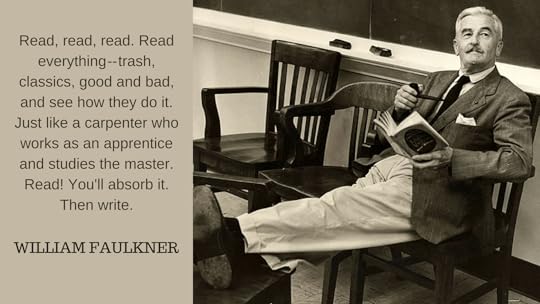
In my humble opinion, the best writing advice ever comes from American writer and Nobel Prize laureate, William Faulkner—
"Read, read, read. Read everything—trash, classics, good and bad, and see how they do it. Just like a carpenter who works as an apprentice and studies the master. Read! You'll absorb it. Then write. If it's good, you'll find out. If it's not, throw it out of the window."
Here are a few reasons behind my opinion.
You can see how they do it
As a writer, reading books from one's own genre helps you to master the formula of the genre. Every mystery or thriller fan opens a book with certain expectations. That's because crime fiction novels are highly formula driven. Whether we're speaking of Dashiell Hammett, Raymond Chandler, or Robert B. Parker, while each had his own unique writing style, all of them followed the same "rules" when crafting their novels.
Crime fiction authors today who hope to be successful must also follow those same rules. Reading crime fiction books allows you to learn the rules, master the formula, by seeing how the great crime fiction authors of the past did it. You can learn more about character development, plotting, and writing dialogue by reading crime fiction novels than you would learn from reading a hundred "How to" books on writing.
Just like William Faulkner put it, while reading "you'll absorb" the process of writing, and that will make you a better writer.
As an apprentice and studies the master
There are even more benefits from reading than simply learning the formula and rules of your genre. Faulkner advised: "Read everything—trash, classics, good and bad..." which means don't limit yourself to just reading genre specific novels.
Read books from other genres, and especially don't neglect the classics. When I say classics, I'm speaking of the great novels of the past you will find on any of the many "100 books to read before you die" lists. Books like The Great Gatsby, To Kill a Mockingbird, Lord of the Rings, Brave New World, etc. Reading the classics will enrich you as a writer in a myriad of ways, but one important benefit is that it will expand your vocabulary.
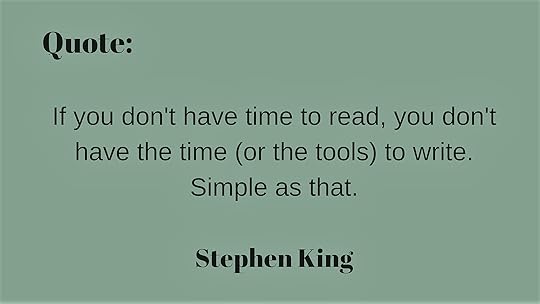
The tools to write
Stephen King, another author who knows a thing or two about good writing puts it quite bluntly in the above quote: "If you don't have the time to read, you don't have the time (or the tools) to write." It's through reading that you acquire the tools to become a good writer.
Personally, I've been a bookworm since childhood so finding the time to read has always been a priority for me. In fact, my love of reading probably has more to do with me desiring to write and publish books than anything else. But occasionally other authors tell me that they simply can't spare the time to read. They are just too busy. If that describes you, better reconsider my friend. If you aspire to be a successful author, better heed Stephen King's good advice.
Read as much and as often as you can. And always remember, every good writer must be a reader first.



